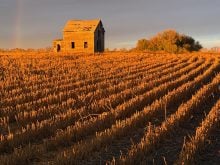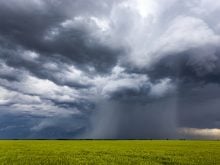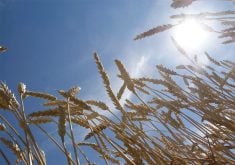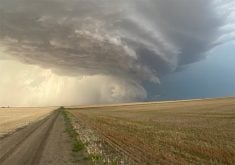Glacier FarmMedia – It’s time to look at the biggest snowstorms that have hit the Prairies.
Originally I planned to look at the early winter, but then decided it was better to look at the 10 biggest storms in the largest population centres for each province: Edmonton, Calgary, Saskatoon, Regina and Winnipeg.
The period of record varies a bit, but for most of these communities, I looked at the last 70 or so years.
Read Also

U.S. bill could keep out Canadian truckers
The Protecting America’s Roads Act, which was tabled in the U.S. House of Representatives at the beginning of October, would “rid the country of illegal immigrant commercial truck drivers and ineligible foreign nationals.”
The nature of snowstorms makes data problematic. They almost always occur over more than one day, so it’s hard to automate the search, at least with my limited programming skills. I looked for large one-day snowfalls (which I could automate) and then checked whether the preceding or subsequent days also had snowfall.
Snowstorms usually do not last more than two or three days, but occasionally I found five days in a row with snowfall, and I counted that as one event. And I was a little uncertain about one event. If you look at Edmonton’s top snowstorm, it occurred over a 12-day period in November 1996. The chances of this being a single storm are slim, but I counted it as one, since there was significant snow on all 12 days.
With out further ado, here are the top snowstorms across the agricultural Prairies according to the total amount of snow that fell.
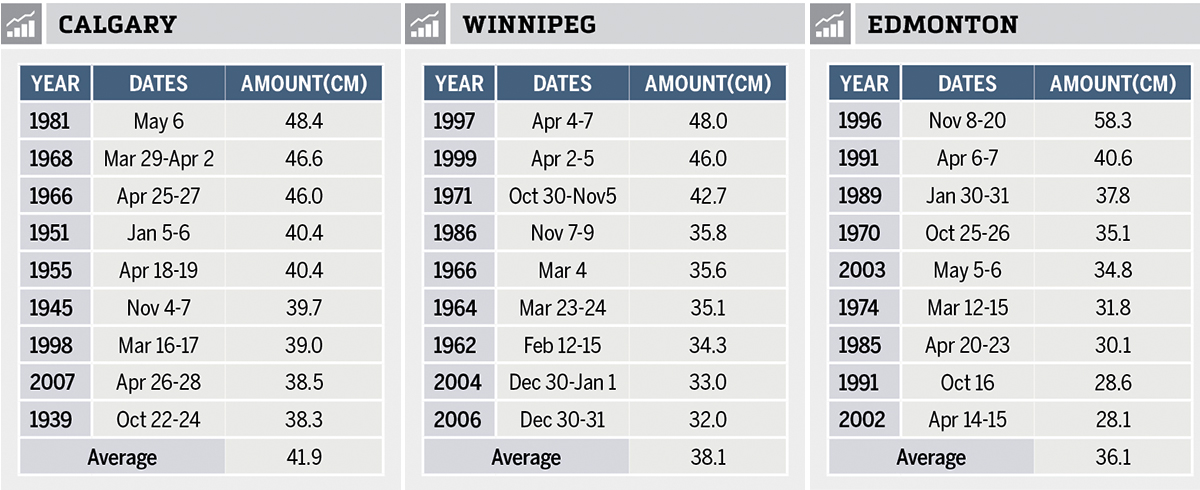
I included an average of the top 10 snowfalls to compare different locations. Calgary had the greatest snowstorm accumulations, followed by Winnipeg and then Edmonton. If I drop out the 12-day 58 centimetre November snowstorm for Edmonton, it ranks near Saskatoon.
Not surprisingly, Regina saw the least amount of snow because it is stuck between the Alberta clipper storm track in the west and the Colorado low track in the east, and rarely sees direct hits from either.
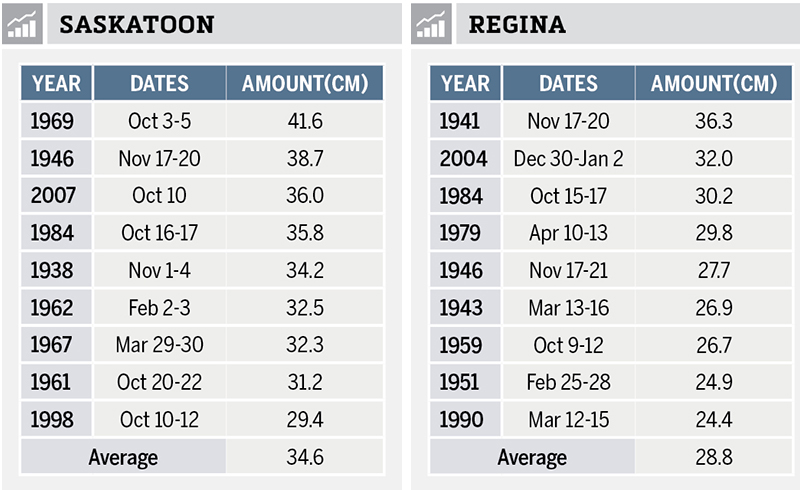
The largest one-day snowfall was in Calgary, on May 6, 1981, when a whopping 48.1 cm of snow fell. This beat out Winnipeg’s infamous April 1997 snowstorm that dumped 48 cm over a three-day period.
It was interesting to learn how few big snowstorms there are. Weather memory can really play around with your mind. We tend to remember certain weather events and then we magnify in our minds how often those types of events occur. I often hear this or something like this from people I talk to: “When I was a kid, we had tons of snow every year! I remember snowbanks that were over my head!”
Two things are going on here. First, weather memory exaggerates the number of previous big snowfalls. And when you are just a little kid, of course snowbanks are often over your head!
I was also struck by the number of big October snowstorms Saskatoon has seen. Half of its top 10 snowstorms occurred in October. The other thing was how many late spring snowstorms Calgary experiences. Four of the top 10 snowstorms occurred in either April or May.
When it comes to snowstorms, I have a bit of a love-hate relationship. If I am home and well-prepared, I don’t mind them. Heck, I even like shoveling and snow blowing after they are done. It gives you a sense of accomplishment.
What I don’t like is when storms interrupt travel plans or knock out power, and then you have all the worries and headaches that go along with those issues.
As we know, big snowstorms do not happen that often, and the question is, will we see one this winter? The answer? Who knows? But if you’re secretly wishing for one, I hope your wish comes true.
Daniel Bezte is a teacher by profession with a BA in geography, specializing in climatology, from the University of Winnipeg. He operates a computerized weather station near Birds Hill Park, Man. Contact him at dmgbezte@gmail.com.






